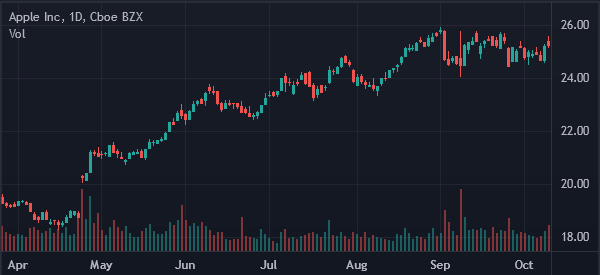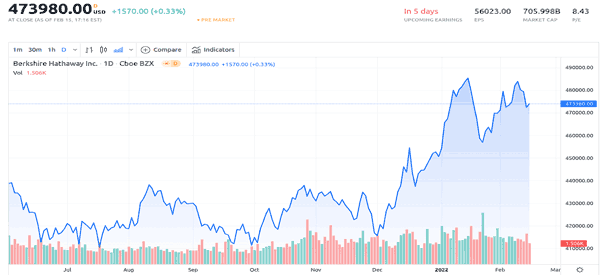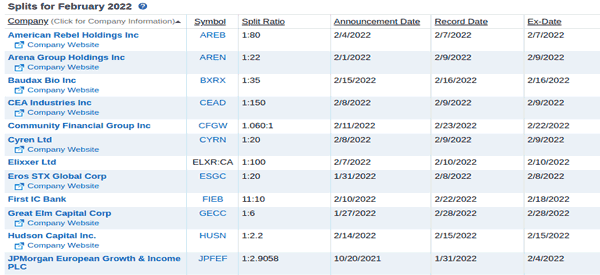A stock split takes place when a company decides to increase share outstanding by issuing more shares to active stakeholders.
When a company is concerned about its share price and finds that the price is too low or high, it can go for a stock split. It’s a popular way of increasing the number of shares and many globally-led companies have been following the same.
Along with increasing the number of shares, a company can attract new investors. The stock split neither changes the value of the stakeholder’s stock nor the market capitalization of the company. We can say that it’s an effective process of making the share affordable for a lot of people who prefer to invest in the stock market.
Table of Contents
The definition: What is a stock split?
A stock split happens when a company decides to issue more shares to its current shareholders without affecting the value of its stakes. It effectively increases the number of shares outstanding and reduces the value of the individual value of each share.
For example, if you have one share of the ABC company worth $ 1000, after the stock split you will have 2 shares of $500.
There are a lot of investors who cannot afford a $1000 share but they can easily buy a share of $500. It’s all about redesigning the cost of a share along with boosting the effort of attracting new investors.
How does stock split work?
The value of a firm increases when it launches new products and enables share repurchases. At a time, the quoted market value of particular stocks increases and becomes too expensive. As a result, the company fails to attract new investors.
When a company fails to get new investors, it badly affects the market liquidity. Multi-billion dollar blue-chip stock enables stock split quite more often.
Types of stock splits?
The traditional stock split is the most popular type. Here, the stock split can happen in:
- 2-for-1
- 3-for-1
- 3-for-2 manner
According to a 2-for-1 stock split, a shareholder will get 2 shares after the split instead of one. The total share value will remain the same as the previous one.
In the 3-for-1, the shareholder will receive 3 shares instead of one. And in a 3-for-2 manner, the shareholder will receive 3 shares instead of the previous 2 shares.
What is a Reverse stock split?
It’s just the opposite of what we know about the common stock split. In a reverse stock split process, a firm reduces its total share outstanding.
More simply, if a person has 10 shares of a particular firm, and the firm has enabled reverse 2-for-1 reverse stock split, that person will have 5 shares of stock. But the total value will remain the same.
A stock market professional or a trader has stock market analysis capabilities. And he/she can predict probably when a company is going to announce a stock split or reverse stock split.
How to identify when a company is going to activate a stock split?
No fixed rule or guideline determines when a firm will go for a stock split. Joining an online trading academy can help you in having an advanced understanding of stock split (or a trading watchlist). There are a wide variety of reasons for which firms enable stock splits.
Psychology
Among all reasons, the first one is psychology. If the price of stock keeps increasing higher and higher, a lot of small investors will find it unaffordable and invest somewhere else. This is not a welcoming thing at all as it directly affects the liquidity of a company.
At such a time, a firm can enable the split. Stock splitting helps in reducing the price and making the stock more affordable for small and medium investors.
For example, we can mention that in June 2014, Apple split its shares. Before the stock split, its shares were trading above $600. After the 7-for-1 stock split, its shares traded around $90.
Every investor received 6 additional shares. The liquidity of the Apple stock increased. Before the split, Apple had a share outstanding of 860 million but after the split, it gained 6 billion shares outstanding.

The actual value of the stock remains unchanged. But the lower stock price affects the manner a stock is perceived along with attracting a lot of new investors. It also informs active shareholders that now they have more shares of a company than before. It’s a way of making them more connected with the company. If the price rises shortly, shareholders will have more stock to trade.
Increase stock liquidity
The second logical reason is that companies use stock splits when they plan to increase the stock liquidity. As you know the stock liquidity increases with the outstanding stock number.
There are a lot of stocks that trade more than a hundred dollars per share and it can result in a large bid or ask spreads. For example, we can mention Warren Buffett’s Berkshire Hathaway. It had never enabled a stock split and its ask spread often gets over $100. According to March 2020, the class A shares have traded above $257,000/share.

A finance processor may not agree with this theory. According to many finance professors, stock splits do not hold any value or are irrelevant. Still, you will find that many globally-led firms are doing it now and then.
Pros and cons of stock splits
Pros
- It effectively improves liquidity
- Portfolio rebalancing is way easier with stock splits
- It often results in increased share price
- It also makes selling put options more affordable for all types of investors
Cons
- It comes with the risk of increasing the volatility
- There is no evidence that all stock splits result in the share price increase
Benefits of a stock split for a common investor
There are many contradictory theories over whether a stock split helps or hurts a common investor. A group of investors and finance professionals says a stock split is a sign that a company is doing well and the share price is going to increase soon.
But we can see that a stock split does not come with any instant change in the fundamental value of a stock. So, there can be no short-term benefit of a stock split for a common investor.
But many successful professionals keep a record of which stocks are going to split in the coming days. Below, a screenshot is attached that contains a quick list of firms that have announced stock split for February 2022-

Concluding to
After exploring a lot of things about the stock split, it’s evident that a stock split is not the ultimate reason to buy a company’s stock. There should be proper portfolio analysis before buying a stock.
One can take the help of finance professionals. Or for self-research, it will include hours and hours of study, market analysis, following published expert opinions, and preferably a degree in the same field.
» Related: The Best News Sources for Your Trading





